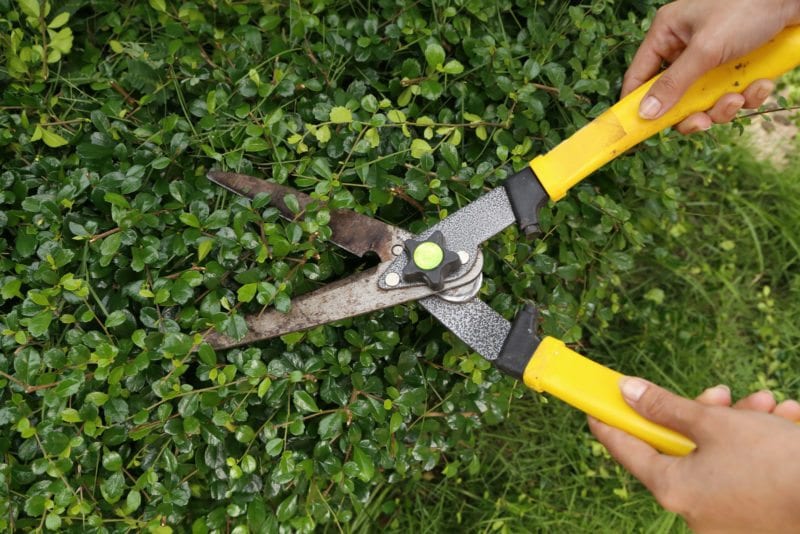GREEN AND GROWING
A Short, Sweet Guide to Pruning

Many gardeners no sooner put their leaf blowers away than they yearn to bring out their pruning shears. This urge should be resisted until February. Even then, the would-be pruner should first answer this basic question: “Why am I pruning?” Pruning is not something that just has to be done. There should be a reason. Pruning to encourage flower growth requires a light hand, as does pruning to shape a plant. Pruning to rejuvenate a plant requires a heavy, sometimes brutal hand. Pruning to reduce a plant’s size often should not be undertaken at all. If a plant is too big for its space, the best solution may be to replace it rather than constantly whacking at it. Such efforts can be self-defeating, since pruning stimulates growth. With thee warnings in mind, here are some broad rules of thumb:
- Prune broadleaf shrubs and trees that produce their flower buds on new growth and flower after Mother’s Day from February through March 15. You must prune before bud break. This is the time to murder Crepe myrtles.
- Prune shrubs or trees that flower between February and Mother’s Day (they produced their flower buds the previous year) either immediately after they have bloomed, or in October.
- Hydrangeas and roses form complicated subclasses. Hydrangeas that bloom only in the spring are best pruned immediately after blooming and at no other time. Spring blooming roses may be pruned until the end of August. Summer and fall blooming plants (including “Knock Out®” roses) should be pruned in February and March only. In either case, old canes may be completely cut back to the ground for rejuvenation in the winter.
Popular spring flowering shrubs and trees include, flowering fruit trees, azaleas, Forsythia, Japanese camellia, flowering dogwood, gardenia, and Indian hawthorn. Summer and fall-flowering shrubs include abelia, butterfly bush, and summersweet.
- Conifers do not take kindly to hard pruning—it is very stressful to them and, unlike broadleaf plants, they will not send out new shoots following pruning. They should only be lightly pruned.
Additional resources:
A Guide to Successful Pruning Shrub Pruning Calendar . pubs.ext.vt.edu/430/430-462/430-462_pdf.pdf.
Pruning Broadleaf Evergreen Shrubs. http://www.ces.ncsu.edu/depts/hort/consumer/quickref/shrubs/pruning_broadleaf-evergrn.html
Pruning Narrowleaf Evergreens (Conifers). http://www.ces.ncsu.edu/depts/hort/consumer/quickref/shrubs/pruning_evergreen-conifers.html
Pruning Basics. http://durham.ces.ncsu.edu/files/library/32/UNH%209.PDF
Pruning Knock Out Roses. http://guilford.ces.ncsu.edu/2013/02/200515/
Tom Watson
Tom Watson is a Volunteer Extension Master Gardener in Mecklenburg County. He has also received a Certificate in Native Plants from UNC-C and a Certificate in Horticulture Technology--Residential Landscape Design from CPCC. He and his wife, Sue Bartlett, own The Cedars Davidson Bed & Breakfast.


